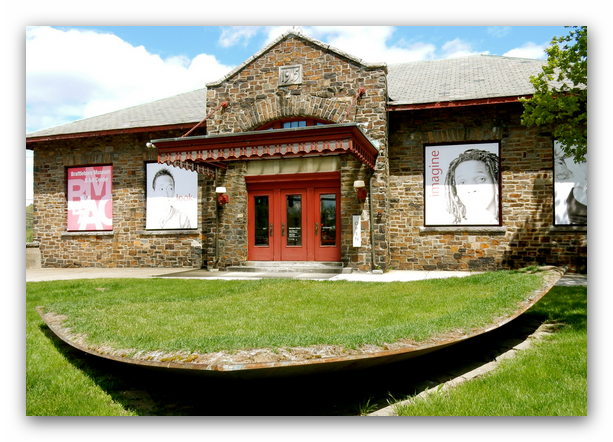Sep 30 2016 - Feb 6 2017
Brattleboro Museum and Art Center
Brattleboro, VT
In his famous poem “Friendly Song,” the late Brazilian poet, Carlos Drummond de Andrade, wrote, “I am working on a song / that will awaken men / and make children sleep.” These lines resounded so powerfully among the citizenry of Brazil that they ended up on the country’s bank notes in the 1980s. The conceit of these lines strikes the reader immediately with a beguiling irony that captures both the incantatory effect of poetry’s verbal music—a lullaby that carries language into the subconscious where it melds with memory—and an alarm that awakens men and women to “the news that stays news.” Perhaps de Andrade’s strongest message in these lines, however, is his implication that children are already awake to the music and meaning of poetry, unlike adults who must be awakened from “the sleep” of their prosaic routines to regain the poetic consciousness of the child.
But what happens one might ask as a logical afterthought to de Andrade’s ars poetica when a child works on a song? The poems on exhibit in Windows to Creative Expression, Young Poets and Artists from the Poetry Studio, reflect the fresh nature of the young poet’s voice that also jolts adults awake from the sleep of their world-weariness. The simplicity, for instance, of the following lines by Frida Rosner, sorrowful as they are, respond with genuine rebuke to even the sage: “The wise man was wrong./ The crack in my heart only grew./ The place in between is a city of sadness.” Such lines remind the reader of William Wordsworth’s claim that “the child is father of the man.” How quickly the “wise man” recognizes the mistake of his implied false encouragement in this young poet’s rebuttal and evocative metaphor for the expanse of her sadness. A similar exciting confidence resounds in Lila Blau’s imaginative poem, “How I Became Myself” in which the speaker envisions her provenance as “a girl” in the image of “The Bird of Beauty and Health” before “the earth was born,” when she assumed an animal form with “a fawn’s head,/ a hummingbird’s body,/ a peacock’s tail.” I especially like Lila’s idea that “her cure of love” transforms her from original form as a hybrid animal into “the girl I am today.”
The rich display of imagery, lyrical economy, and bold self-exploration in these recent poems from the Poetry Studio both dazzles and moves the reader. The young poets who wrote them capture de Andrade’s metaphorical notion of the child’s “sleep,” that is, the dream-like expression that transcends mere information with “memorable speech,” waking the reader with surprising original sense.
Ann Gengarelly, poet-in-the-schools for over 30 years, has nurtured these budding poets by inviting them to write in the welcoming quiet of her poetry studio where an idyllic setting of rock gardens and a spacious but intimate writing room complement an atmosphere of enlightened creative energy. During the summer’s Poetry/Art/Bookmaking workshops Tony Gengarelly leads bookmaking and art classes where students have the opportunity to create art and beautiful handcrafted books that visually expand the students’ poems. If I said the magic that emerges from this idyllic “studio” is no surprise, I would be telling only half the truth.
— Chard DeNiord, Vermont Poet Laureate
Exhibition overview from museum website
Exhibition Venues & Dates
Sep 30 2016 - Feb 6 2017
Brattleboro Museum and Art Center
Brattleboro, VT
